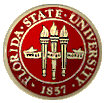

Credit: 3 semester hours.
Pre-requisites:
PHY-3221: Intermediate Mechanics.
Co-requisites: None.
The aim of the course is to expose senior undergraduate students to
Theoretical Mechanics. We will mainly follow the classical textbook
by Landau and Lifshitz.
At the end of the course students should
be able to solve typical mechanics problems by themselves.
We will start with Lagrangian Mechanics, which is related to the path
integral formulation of quantum mechanics and quantum field theory.
We continue with Conservation Laws and their relation to space-time
symmetries (Noether's theorem). A thorough treatment of the Kepler
Problem, which is at the cradle of modern science, follows.
Next, we will briefly refresh you existing knowledge of Small Oscillations
then move on to cover Rigid Body Motion, introducing the inertia tensor
and Euler angles.
With chapter 7 of Landau and Lifshitz we turn to Hamiltonian Mechanics,
which is another precursor of quantum mechanics as well as quantum
field theory. This is particular clear in the algebra of Poisson
brackets. Hamilton's equations imply Liouville's Theorem, which
shows that multi-particle motion in phase space (not coordinate
space) is that of an incompressible fluid.
If time allows, we will also cover the Mechanics approach to
scattering (material from chapters 4 of Landau and Lifshitz)
and fill in previously omitted sections of the textbook.
Course Outline:
| Lagrangian Dynamics | Chapter 1 (L&L) . |
| Conservation Laws. | Chapter 2 (L&L). |
| Central Potential Motion, Kepler problem. | Chapter 3 (L&L). |
| Small Oscillations (brief review). | Chapter 5 (L&L). |
| Motion of a Rigid Body. | Chapter 6 (L&L). |
| Hamilton's equations, Poisson brackets, Liouville's theorem. | Chapter 7 (L&L). |
| If time allows: Collisions between particles. | Chapter 4 (L&L). |
Home and Class Work
| Set 1 |
Solutions:
1a.pdf ,
1b.pdf ,
2.pdf ,
5.pdf .
| Set 2 |
Solutions:
6.pdf ,
7.pdf ,
8.pdf ,
9.pdf .
|
Set 3 |
Solutions:
10.pdf ,
11.pdf ,
13.pdf ,
14.pdf ,
15.pdf .
|
Set 4 |
Data:
KeplerDat.txt.
Solutions:
16.txt ,
16.f ,
17.pdf ,
18.pdf .
|
Set 5 |
Solutions:
19.pdf ,
20.pdf ,
21.txt ,
21.f ,
21.plt ,
21.pdf ,
22.pdf ,
22YouTube ,
?.pdf ,
!.pdf ,
25.pdf .
|
Set 6 |
Solutions:
26.pdf ,
27.pdf ,
28.pdf ,
Tippe Top .
|
Set 7 |
Solutions:
Precession,
29.pdf .
|
Set 8 |
Solutions:
32.pdf ,
34.pdf ,
Euler.pdf ,
35.pdf .
|
Set 9 |
Solutions:
36A.pdf ,
37.pdf ,
38.pdf .
|
Exams
Midterm (Friday October 7).
Solutions: 1.pdf,
2.pdf,
3.pdf.
Final (Thursday December 15).
Solutions: solutions.pdf.
Textbook:
E.M. Landau and E.M. Lifshitz,
Mechanics: Volume 1.
, (Butterworth-Heinemann).
Any edition will do (search the web for inexpensive used copies in
good condition).
Evaluation of Performance:
The course grade will be
based on homework assignments, classworks, a midterm exam, and the final
exam. Classworks are unannounced quizzes and assignments, which have to
be completed during the lecture hour. In contrast to exams classworks
will be open book and you can freely talk with one another and the
instructor. Missing class unexcused results in zero points on the
particular classwork, if there is some at that day. There will be one
homework set of about two problems per week. Solutions are to be turned
on Wednesdays and Fridays in class. Discussions of the homework problems
among students are encouraged - but each student must turn in his/her own
assignment and should be able to explain his or her solution to the rest
of the class. The instructor will post solutions after the homework is
returned. All of the the classwork and exams will be analytical and needs
only paper and pencil. This is also true for most of the homework, but
occasionally students may have to use a numerical program language like
Fortran, C or C++ and a graphical package like gnuplot. Besides, an
algebraic program like Maple can be of use.
Assessment and Grades:
| Home and class works | 64% |
| Midterm (October 7) | 12% |
| Final Exam | 24% |
| A>90%, A->85%, B+>80%, B>70%, B->65%, C+>60%, C>50%, C->40%, D>20%, F the rest. |
The Statements of
the following website are part of this Syllabus:
Required Syllabus Statements.
BACK.